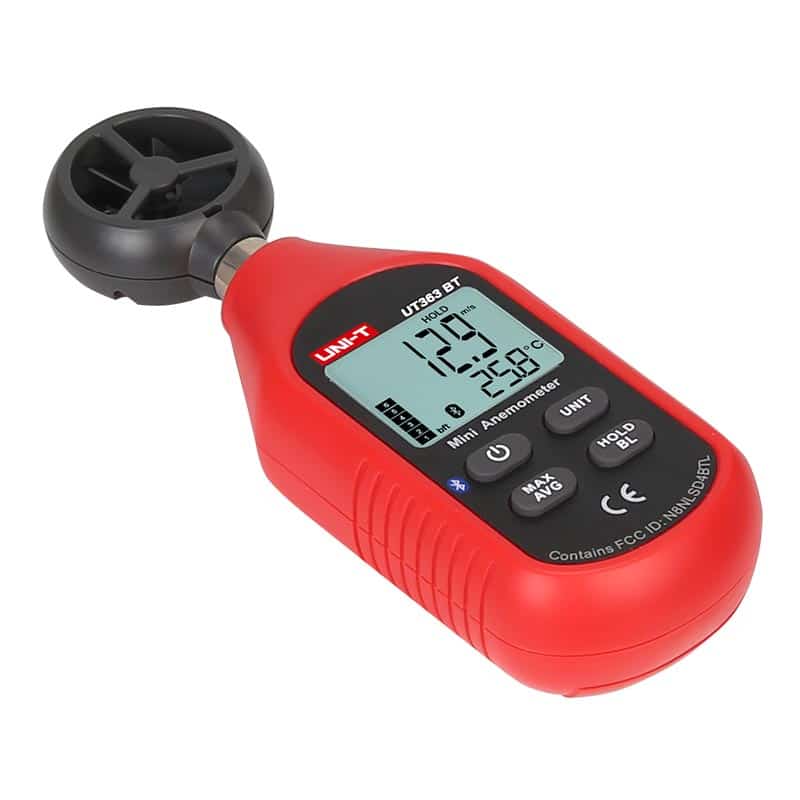Picking the Right Anemometer: A Comprehensive Buying Overview
Picking the Right Anemometer: A Comprehensive Buying Overview
Blog Article
Exploring the Features and Advantages of Anemometers for Weather Condition Enthusiasts and Specialists
From cup anemometers to sonic anemometers, each type brings its unique collection of advantages and applications, shedding light on different facets of climatic conditions. As we dive right into the features and advantages of anemometers, a much deeper understanding arises not only of dominating climate phenomena but likewise of the more comprehensive implications for industries like wind energy manufacturing and ecological research study.
Relevance of Anemometers in Weather Condition Surveillance
Anemometers play a crucial duty in weather condition monitoring by providing precise dimensions of wind rate, aiding in forecasting and understanding weather patterns. These tools, ranging from conventional cup anemometers to modern-day ultrasonic anemometers, are vital for meteorologists, researchers, and climate fanatics alike. By gauging wind speed, anemometers aid in establishing the intensity of weather sensations such as twisters, cyclones, and storms. In addition, they give valuable information for aeronautics, maritime operations, and different sectors that are delicate to wind problems.

Kinds of Anemometers and Their Applications
With the important function anemometers play in weather condition surveillance and forecasting, comprehending the numerous kinds of these tools and their applications comes to be crucial for specialists and fanatics in the field. One of the most typical kinds of anemometers include mug anemometers, vane anemometers, hot-wire anemometers, and ultrasonic anemometers. Mug anemometers include 3 or four cups mounted on straight arms that rotate with the wind, gauging its speed. Vane anemometers, on the other hand, utilize an easily rotating vane to line up with the wind instructions, giving both wind rate and instructions measurements. Hot-wire anemometers run based on the concept of convective warm transfer, where the cooling result of the air circulation is determined to figure out wind rate. Ultrasonic anemometers use ultrasonic acoustic wave to compute wind rate and instructions properly.
Mug anemometers are suitable and robust for basic climate monitoring, while vane anemometers are favored for directional measurements. Ultrasonic anemometers are non-intrusive and offer high accuracy, typically utilized in study and specialized climate surveillance applications.
Advantages of Using Anemometers in Forecasting
In meteorology, the utilization of anemometers supplies indispensable advantages for boosting the precision of climate forecasting. Anemometers determine wind speed and direction, offering crucial information for predicting climate patterns. By including wind information right into projecting models, meteorologists can better understand websites the activity of weather systems, prepare for changes in atmospheric problems, and problem more specific projections.
Furthermore, anemometers play a vital role in analyzing possible weather threats. Monitoring wind speeds aids forecasters forecast extreme weather events such as hurricanes, hurricanes, and winter storms with better precision. This very early caution system enables authorities to release timely notifies and implement needed precaution, lowering the risks to life and residential property.
Furthermore, anemometers aid in optimizing renewable resource production. By assessing wind patterns, meteorologists can identify appropriate locations for wind farms and forecast power outcome, adding to the reliable generation of wind power.

Anemometers in Wind Energy Manufacturing
Offered the vital role anemometers play in offering exact wind data for weather condition projecting and danger evaluation, their value includes the world of wind power manufacturing. Anemometers are crucial tools in the field of wind power, where the measurement of wind rate and direction is critical for figuring out the expediency and effectiveness of wind turbine installments. By properly measuring wind rates at varying elevations, anemometers assist enhance the positioning and design of wind generators to optimize energy output.
In wind ranches, anemometers are purposefully positioned to accumulate real-time wind information that is made use of to evaluate the potential power production of a website. This information is critical in figuring out the financial practicality of wind power projects and in forecasting power generation to ensure grid security. Additionally, anemometers aid in checking wind problems to maximize turbine performance, navigate here protect against damages from high winds, and make certain the safety and security of workers working in the vicinity of wind generators.
Enhancing Weather Comprehending With Anemometers

Anemometers play a vital role in boosting our understanding of microclimates. These localized weather problems can vary dramatically from more comprehensive local projections, making it vital to have accurate data for certain locations. anemometer. By strategically positioning anemometers in various places, researchers can gather detailed details on just how wind behaves in various terrains, city atmospheres, or bodies of water
Additionally, anemometers add to enhancing climate projecting designs by giving real-time information on wind behavior. This details is specifically beneficial for predicting serious climate events, optimizing agricultural practices, and sustaining sectors like air travel and maritime navigation. On the whole, anemometers are important tools that allow us to dive much deeper into the intricacies of weather condition systems, eventually leading to even more accurate forecasts and better-informed choices.
Verdict
In conclusion, anemometers play an important duty in weather tracking and forecasting by measuring wind speed and instructions. Anemometers additionally have applications in wind power production, further highlighting their importance in both weather forecasting and eco-friendly power fields.
From mug anemometers to sonic anemometers, each type brings its unique set of benefits link and applications, dropping light on different facets of climatic conditions. These instruments, ranging from conventional cup anemometers to modern-day ultrasonic anemometers, are essential for meteorologists, researchers, and climate fanatics alike. The most usual kinds of anemometers consist of cup anemometers, vane anemometers, hot-wire anemometers, and ultrasonic anemometers. Mug anemometers are robust and suitable for general weather monitoring, while vane anemometers are preferred for directional dimensions. Anemometers are essential tools in the area of wind power, where the measurement of wind speed and direction is essential for determining the feasibility and performance of wind generator installations.
Report this page